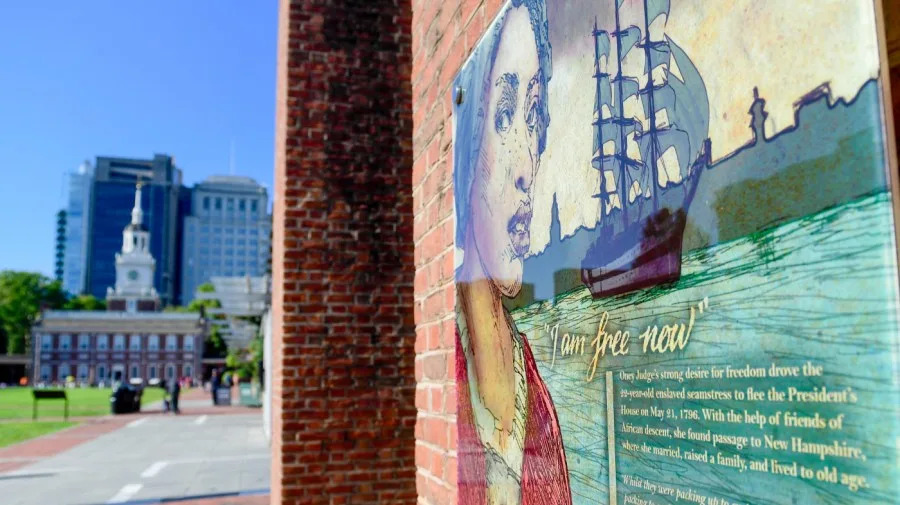
On Aug. 4, the National Park Service announced that it will restore and reinstall the statue of Confederate Gen. Albert Pike in Washington.
This decision is yet another round in the ongoing fight over the American past. Trump and his supporters want to substitute a comprehensive U.S. history with a purely celebratory one.
For the MAGA movement, “make America great again” means proclaiming that America always was great and expunging from the historical record any fact, event or idea that tarnishes the image of a glorious civilization stretching from “sea to shining sea.”
Authoritarian regimes have always understood the importance of history and tried to control it.
“For Russians, the past is certain; it’s the future that is unpredictable,” a Soviet proverb maintains. The adage refers to the practice of subordinating history to an ideology with a vision of a utopian future but no clear path to get there.
In his dystopian novel, “1984,” inspired both by the Spanish Civil War and Stalinism, George Orwell developed the concept further. “Who controls the past controls the future,” he wrote. “Who controls the present controls the past.”
When his imaginary state Oceania made peace with Eurasia and went to war with East Asia, its historians and propagandists quickly rewrote their narratives to proclaim that the new enemy had always been the enemy.
The MAGA assault on historical truth began in 2019, when a group of scholars led by Nicole Hannah-Jones published the “1619 Project.” Trump and his followers interpreted the project’s call for a more inclusive historical narrative that acknowledged the evils of slavery and the continuing problem of systemic racism as an existential threat to their cherished vision of American exceptionalism.
The president responded by creating the “1776 Advisory Commission,” with a mandate to rebut the “1619 Project” and promote civics education “to encourage citizens to embrace and cultivate love of country.”
The commission’s report celebrates the U.S. as the “most just and glorious country in all of human history.”
When Trump left office in 2021, 35 states took up the cause of promoting a celebratory version of U.S. history, passing “gag laws” that limited public school teachers’ ability to discuss slavery, Jim Crow and systemic racism as well as gay and transgender issues.
Trump returned to office in January determined to promulgate his preferred version of history with a vengeance.
On March 27, he issued an executive order with the provocative title, “Restoring Truth and Sanity to American History.” It declared the administration’s policy “to restore Federal sites dedicated to history, including parks and museums,” and “solemn and uplifting public monuments.”
Its stated goal is “to remind Americans of our extraordinary heritage, consistent progress toward becoming a more perfect Union, and unmatched record of advancing liberty, prosperity and human flourishing.”
The president vowed “to restore the Smithsonian Institution to its rightful place as a symbol of inspiration and American greatness.”
The order prohibits the Smithsonian’s museums from spending money on “exhibits or programs that degrade shared American values, divide Americans based on race” and demands that the American Women’s History Museum “not recognize men as women in any respect.”
On Aug. 12, the White House sent a letter notifying the Smithsonian Institute that it would be reviewing “selected Smithsonian museums and exhibitions” to insure they “align with the president’s directive to celebrate American exceptionalism.”
The push for a celebratory version of American History did not stop with the Smithsonian.
The order also required the secretary of the Interior to ensure that public monuments, statues, makers and memorials “do not contain descriptions, depictions or other content that inappropriately disparage Americans past or living (including persons living in colonial times).”
The monuments should “instead focus on the greatness of the achievements and progress of the American people or, with respect to natural features, the beauty, abundance and grandeur of the American landscape.”
In compliance with the order, Interior Secretary Doug Burgum instructed staff under his jurisdiction to post notices instructing visitors to report “any signs or other information that are negative about either past or living Americans or that fail to emphasize the beauty, grandeur, and abundance of landscapes and other natural features.”
At the president’s direction, the Pentagon has restored the names of seven military bases originally named for Confederate generals.
The Department of Defense made the change using a clever workaround. For example, Ft. Benning, Georgia, originally named for Confederate Brigadier Gen. Henry L. Benning, is now named for Corporal Fred C. Benning, who won the Distinguished Service Cross in WWI.
Statues and other Confederate symbols have been at the center of the debate over the American past since the 2015 massacre of parishioners at the African American Methodist Episcopal Church in Charleston, South Carolina by white supremacist Dylan Roof.
Amid a storm of protest, the South Carolina legislature voted to remove the Confederate Battle Flag from the state house dome, where it had been raised in 1961 to protest the civil rights movement.
The debate intensified with the murder of George Floyd and the birth of the Black Lives Matter movement.
It came to a head in Charlottesville, Virginia in August 2017, when white supremacists protesting the city council’s decision to remove a statue of Robert E. Lee clashed with counterprotestors, killing one of them.
The confrontation reveals why history matters. To liberate themselves from oppression, marginalized people must reclaim their past from the oppressors who seek to hide it.
Most Confederate monuments were erected after 1890 — not to memorialize lives lost during the Civil War, but to assert white power in the Jim Crow era.
American history should not be celebratory nor iconoclastic, but inclusive. We can recognize the accomplishments of founders of the republic and still acknowledge that they lived off the proceeds of human bondage.
Those two truths are not mutually exclusive. Both are part of the American story and should be included in the history we teach our children.
Tom Mockaitis is a professor of history at DePaul University and the author of “Violent Extremists: Understanding the Domestic and International Terrorist Threat .”
Copyright 2025 Nexstar Media, Inc. All rights reserved. This material may not be published, broadcast, rewritten, or redistributed.
For the latest news, weather, sports, and streaming video, head to The Hill.







Comments